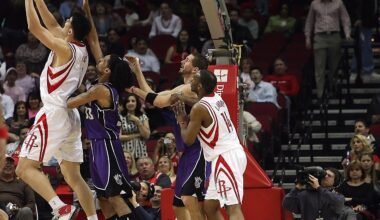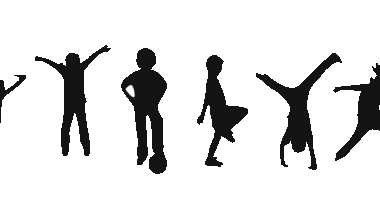Integrating Neural Control Models into Sports Biomechanics Simulations
Sports biomechanics is an essential field that analyzes movement patterns in athletes to enhance performance and reduce injury risk. A key advancement in this domain is the integration of neural control models into biomechanical simulations, bridging the gap between physiology and simulation technology. Neural control plays a pivotal role in coordinating muscle activity and movement execution, making it fundamental to accurate modeling. By understanding how the nervous system interacts with musculoskeletal mechanics, researchers can create simulations that more closely represent real-world biomechanical responses. A diverse system of neural control incorporates sensory feedback and motor outputs, contributing to muscle activation patterns that dictate movement timing and force generation. This complexity underscores the importance of precisely modeling these interactions. Utilizing advanced computational methods allows for testing various training interventions virtually, optimizing performance while minimizing injury. Neuroscience advances provide the framework for developing sophisticated algorithms that simulate neural control mechanisms. The potential applications of these models span various sports, enhancing coaching and rehabilitation efforts. Effective integration will transform how athletes train, offering custom-tailored strategies for improved athletic performance, ensuring effectiveness, and providing data-driven insights.
The Role of Neural Control in Movement
Neural control is the mechanism through which the brain and spinal cord communicate with muscles, enabling coordinated actions. Understanding these mechanisms is pivotal for sports biomechanics as they dictate how movements are initiated and executed. Muscles do not work in isolation—rather, they are activated through complex neural pathways that take into account proprioceptive feedback from various body segments. This feedback loop allows for the continuous adjustment of performances in response to environmental demands and internal physiological states. For instance, during high-speed athletic movements, such as sprinting or jumping, rapid neural adaptations occur, optimizing muscle function. By simulating these neural control models, researchers can study variations in movement that arise from different neural strategies or training techniques. Moreover, these simulations serve to highlight the potential consequences of fatigue or injury on neural control, providing insights into rehabilitation approaches. Continuous advancements in modeling techniques allow for nuanced understanding and representational accuracy. Ultimately, implementing neural control models unveils how biomechanical simulations can predict outcomes and advise athletes on optimal training regimens, enhancing readiness for specific competitive conditions.
One of the significant challenges in integrating neural control models into biomechanics simulations is capturing the nonlinear dynamics of human movement accurately. Human beings exhibit an astounding variety of movement strategies that are influenced by numerous factors, including fatigue, motivation, and motor learning. The variability in performance necessitates a robust simulation framework. Traditional biomechanical models often focus solely on kinematic and kinetic data, neglecting the underlying neural controls that dictate these movements. However, incorporating neural dynamics allows for a more holistic approach, capturing not just the physical aspects of performance but also the cognitive and emotional factors influencing an athlete’s actions. Advanced computational methods such as machine learning and artificial intelligence are proving invaluable in this integration process. These techniques can effectively analyze large sets of data, optimizing simulations for real-time applications. By examining neural patterns associated with specific performance levels, researchers can tailor their insights for individual athletes. Moreover, this level of customization enhances the relevance of simulations, making them powerful tools for identifying areas of improvement and informing coaching strategies based on simulated outcomes, potentially revolutionizing athletic training.
Methodological Advances in Simulation Technology
To achieve effective integration, recent technological advances in simulation methods are essential. Innovations in motion capture technology and real-time data processing have opened doors for more realistic biomechanics simulations. When combined with neural control models, these technologies enable the collection of precise movement data and an understanding of underlying neural processes. For instance, wearable sensors can capture not only the kinematics of movement but also the muscle activation patterns. This data can feed directly into simulations, refining their accuracy. The advent of virtual reality (VR) has further advanced simulation fidelity, enabling immersive environments that can mimic the challenges athletes face in real-world conditions. VR platforms can simulate various sports scenarios, providing athletes with immediate feedback regarding their performance and neural activity. In such interactive settings, athletes can undergo training sessions tailored to their specific needs, observing how modifications impact their performance. These advanced methodologies create a powerful synergy between biomechanics theory, neural control, and practical training applications, fostering enhanced athlete performance through personalized feedback and proactive training strategies, essential for competitive edge realization.
Examining how athletes adapt their movements over time can drive further development in biomechanical modeling and simulation. Neural adaptation plays a crucial role in learning new motor skills or refining established techniques, and understanding these processes can vastly improve training frameworks. Models that incorporate neural control help elucidate how athletes learn to optimize muscle coordination as tasks become more practice-oriented and habitual. For example, early stages of skill acquisition might involve trial and error, where feedback helps the athlete adjust movement. As proficiency improves, neural pathways become increasingly refined, leading to more efficient movement execution with reduced energy expenditure. Simulations can reflect this progression, providing insights into the timeline of skill acquisition and adaptation. Furthermore, these models can predict how athletes might recover from injuries by simulating the re-establishment of neural pathways and muscle function over time. Ultimately, understanding neural adaptation equips coaches and practitioners with the knowledge to refine training regimens that align with an athlete’s unique neuromuscular profile, augmenting the effectiveness of training interventions.
Applications of Integrated Models in Sports
The application of integrated neural control models in sports biomechanics is revolutionary and multifaceted, offering diverse benefits across various sporting disciplines. These computational models provide insights into performance optimization, recovery protocols, and injury prevention strategies. For instance, in sports like basketball, understanding how players adjust their shooting techniques based on cognitive feedback can lead to innovative training practices. Similarly, in track and field, grasping the interplay between neural signals and muscle functions can aid in tailoring sprinting techniques for each athlete. Moreover, predicting potential injuries based on deviations from optimal neural-motor patterns aids in preemptive injury management. Coaches can utilize these data-driven insights to develop individualized training programs that address specific weaknesses or enhance strengths observed in simulations. Furthermore, as athlete monitoring technologies advance, integrating real-time data into these simulations will allow for adaptive coaching strategies. This continuous feedback loop will empower athletes to achieve peak performance levels. The implications are profound, extending from preparation to competition, ultimately leading to a comprehensive approach that encompasses all facets of athletic training and performance management.
In conclusion, the integration of neural control models into sports biomechanics simulations represents a critical evolution in how we analyze and enhance athletic performance. This interdisciplinary approach not only allows for more accurate simulations of human movement but also offers insights beyond traditional biomechanics frameworks. The ability to model the complex interactions between neural function and biomechanics paves the way for innovative training methods tailored to individual athletes’ needs. As technology progresses, the fusion of neuroscience, biomechanics, and real-time data analytics will offer athletes unprecedented advantages. Such integration will not only refine performance analysis but also provide a foundation for targeted interventions in rehabilitation and training. With advancements in computational modeling techniques, including artificial intelligence and machine learning, a new era of personalized sports science is upon us. Athletes, coaches, and sports scientists stand on the brink of transformative changes. As we look forward, embracing these advances will shape the future of how we approach sports biomechanics, ultimately leading to greater understanding and enhanced athlete capabilities.


